BY MARCELLA DURAND | An art installation, “Joined an Avalanche, Never to be Alone Again,” opened on Oct. 4 at the foot of the temporary Corlears Hook Park bridge. The piece features gravel, corrugated steel, core samples, repurposed fencing from the F.D.R. Drive — and asphalt.
A low-tide wave made of 100 percent recycled asphalt is one part of the temporary art installation at East River Park funded by the city’s Department of Design and Construction and the Department of Cultural Affairs and costing $40,000.
At a recent walk-through, the D.D.C. public artist in residence, Carlos Irijalba, explained that the asphalt is “green,” meaning it is recycled from street-repaving operations. But to those who walked by while this work was being installed, it smelled anything but — yet another pollutant added to a stark landscape that has been stripped of its greenery, leaving only fencing, steel and gravel — and asphalt, lots of it.
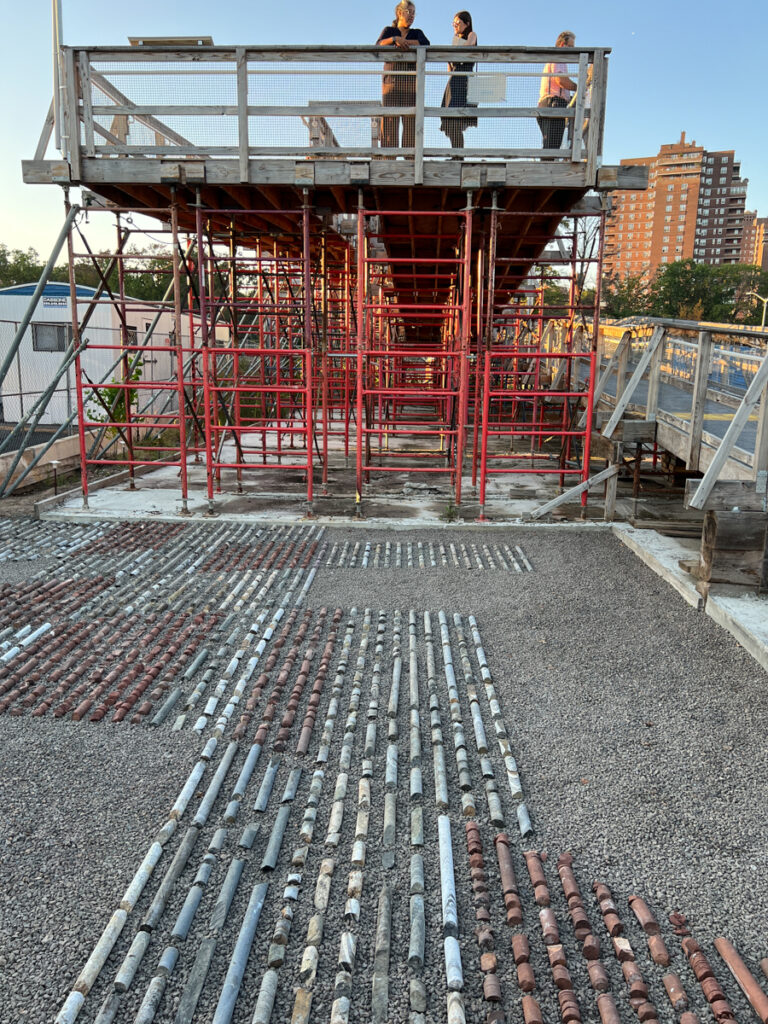
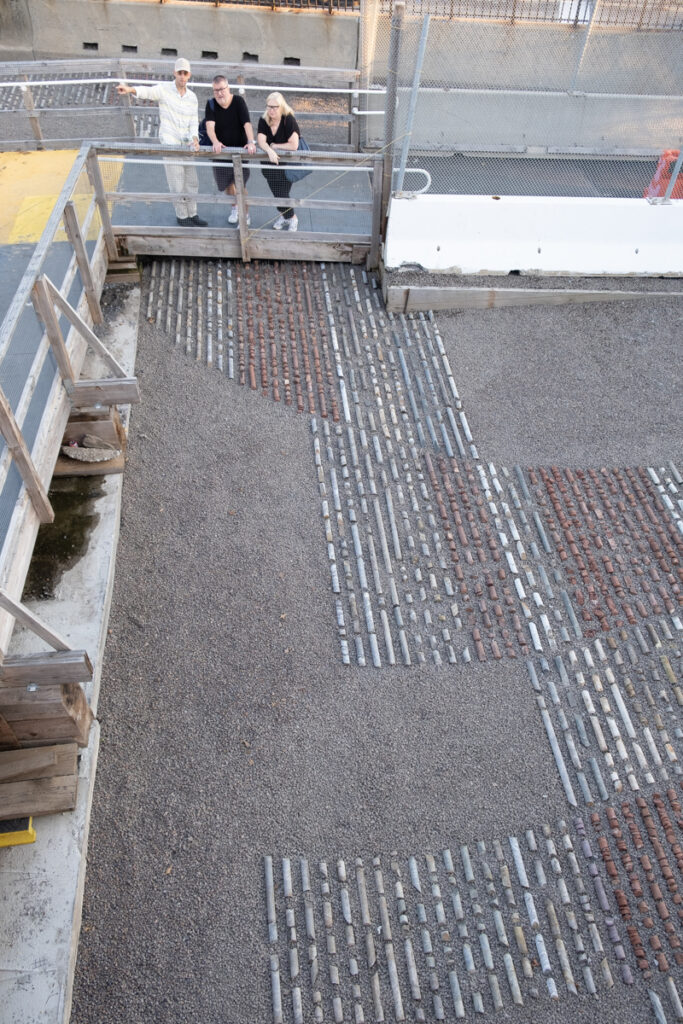
For a community missing its park, grieving the loss of hundreds of mature trees and open green spaces filled with memories of picnics, music, games and simple relaxation, we are given art that is essentially indistinguishable from the East Side Coastal Resiliency construction site.
This artist describes another part of the piece as “a sprawling geotechnical core sample sculpture.” The structure behind it is the temporary bridge from Corlears Hook Park to the ferry landing and the remnant of shoreline that’s still accessible.
The third part of the installation, repurposed fencing, blends into all of the other fencing, keeping us from what used to be public green space; the smell of its asphalt blends into the daily smell of dust, exhaust and endless construction materials; its gravel is just another stretch of gravel along what used to be grassy lawns and bushes alive with pollinators. Its title is displayed on a construction billboard and has no connection to anything.
The repurposed fence used to run alongside the F.D.R. but was removed for construction of the giant E.S.C.R. levee, in what is left of the southern section of East River Park.
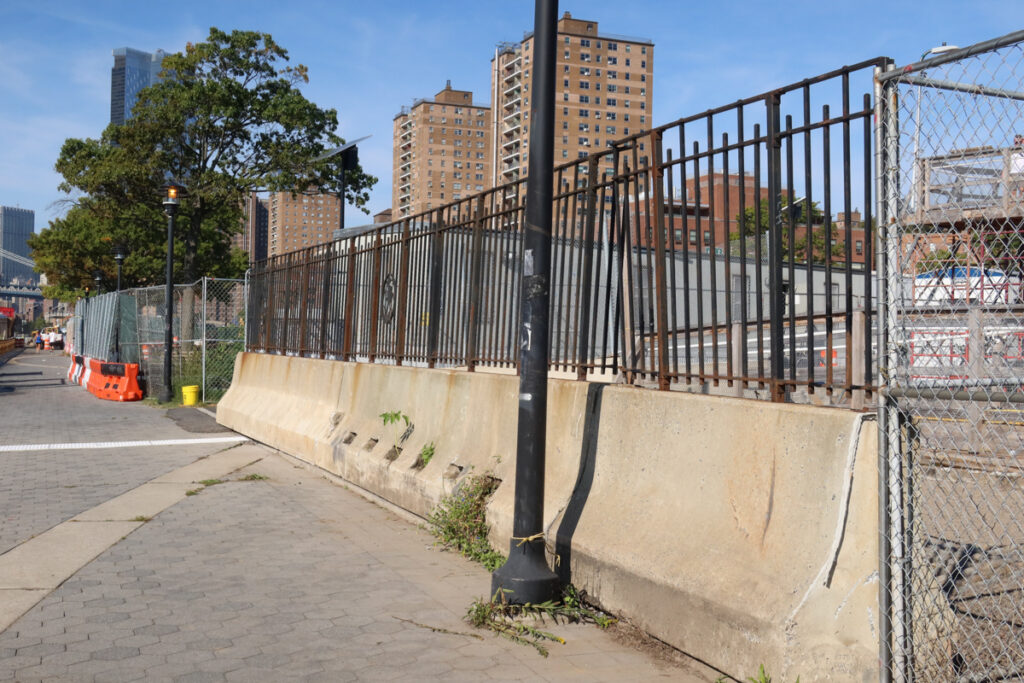
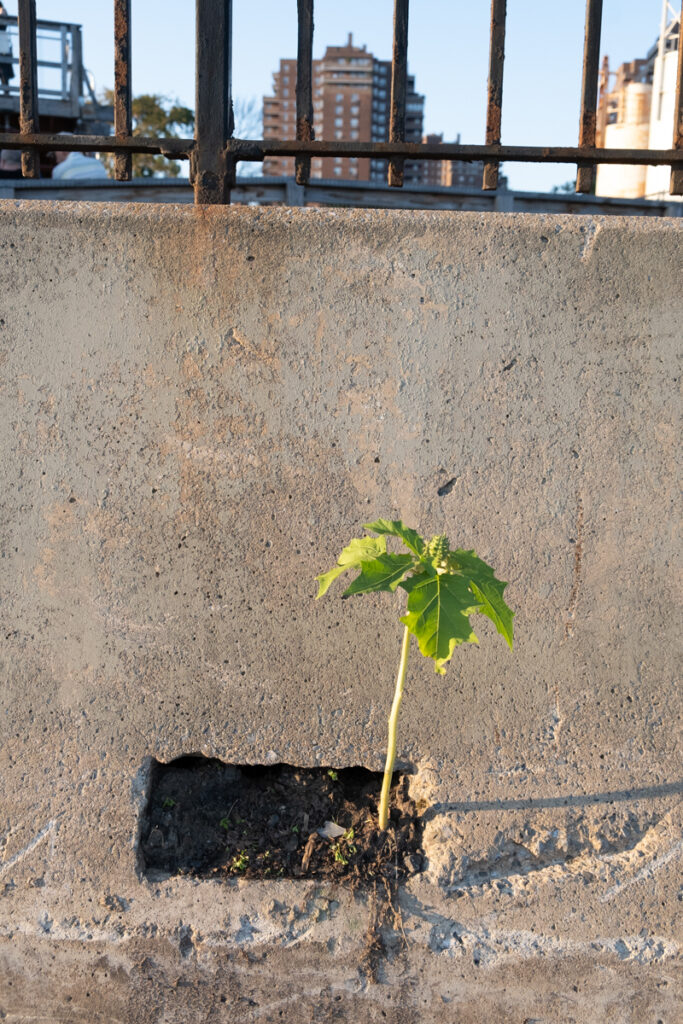
The installation of this work required trucking in yet more construction materials, “harvested from the city’s infrastructure,” releasing more pollutants and carbon into an area already overloaded with pollutants and carbon, and dumping asphalt onto one of the last remaining bits of the East River Park’s esplanade. The asphalt is meant to look like a wave. It is unsealed and unpainted, a wave-like pile of loose asphalt that is already disintegrating into an estuary that is expected to keep accepting all of the environmental insults we pour into it. The detritus of this piece may eventually be found in our lungs, in fish and bird stomachs, and at the bottom of the estuary and, eventually, the ocean.
Artist Irijalba writes, mistakenly, that his three-part piece “makes visible how New York City is building resiliency into its survival, looking decades and centuries into the future.”
And yet, if you question this art piece, you’re told you don’t understand “art.” Because you only live here, in a community famous for its artists, poets, dancers and musicians. Because maybe you’re an artist yourself who has seen — or even created yourself — so many magnificent pieces that make you more aware of the brilliant possibilities of art when it is organic to the community and the landscape.
You remember artists like Agnes Denes, who planted a wheat field in view of the World Trade Center; Cecilia Vicuña, who traced the fall of milk along the West Side Highway to see where water goes when it drains into the river; Kathy Westwater, who created a collaborative dance of poetry atop the massive Fresh Kills garbage dump in Staten Island; the Smokehouse Associates and William T. Williams, who painted powerful abstract murals in Harlem.
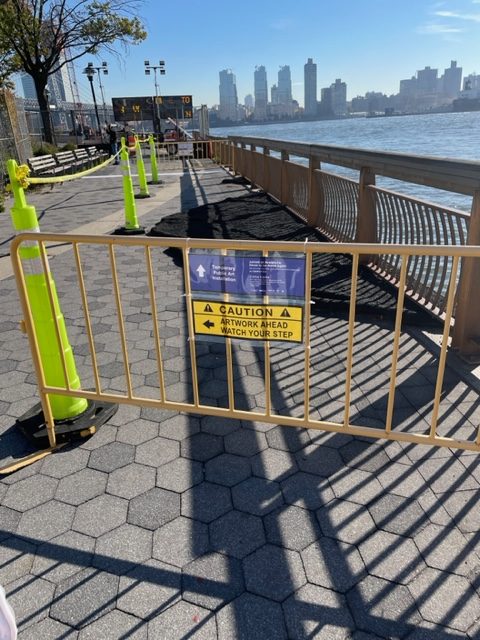
From our own neighborhood, the Lower East Side, the marvelous Eileen Myles has tirelessly written incredible poetry and essays driving home the loss of this park. Native activist/artist Emily Johnson recently led a powerful, tragic performance along the fences next to the destruction of East River Park. So many more artists have worked diligently and with vision to understand the communities in which they were working and the ecologies of the landscape about them.
Instead, we got…asphalt, fencing and gravel. More of it.
Durand is a poet and author of, most recently, “Rays of the Shadow” and “Le Jardin de M.”

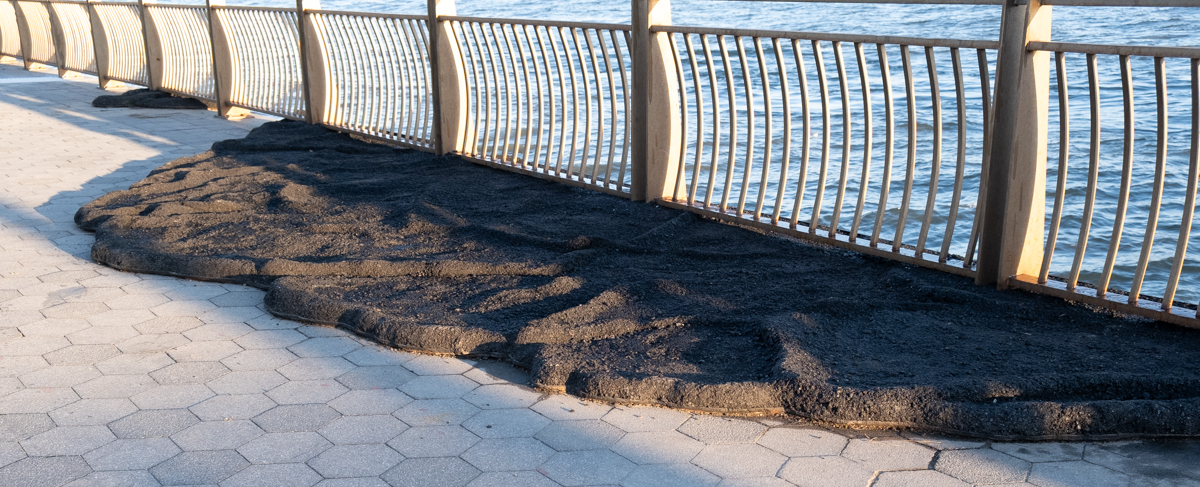
I love it. Silliest thing I read today.
Hideous and criminal waste of money.
The part I did like was the one with recycled core samples arranged in a design, with various colors. I thought it was simple and attractive, a good use of construction materials.
What I really like about this article is the fact that it gives voice to the anger I, as well as many others, feel about the destruction of grass and beautiful trees in the park. I don’t live near the park and hadn’t known much about it until I saw photos and a video of beautiful flowering trees being chainsawed into sawdust. Just horrible, horrible, nasty, stupid, cold, bureaucratic senselessness. The juggernaut of the impersonal revolution in governmental numbness baked into the suffering ground. How did those workers feel? Was there a sense of satisfaction in turning something beautiful into ugliness? We’re told this is necessary to prevent flooding, but the community had come up with a suggestion that the creators insisted would have protected the beauty and served the purpose of flood and storm protection. It was coldly dismissed by Councilmember Rivera and others.
S H I T it what the title of this art work should be.
Thanks to all the low lives that destroyed the park.
A sorry choice for an “art” presentation.
Ugly, useless, and of no value to the community. Another example of NYC going down the tubes. The “wave” mimics a load of feces…so nice to be reminded of that in our “open spaces”
I’m sorry, that’s some bogus art school crap by somebody who probably has no roots here. I can think of a lot more worthy ways to spend $$ here. Pfff
I am dumbfounded. This installation almost makes as much sense as the $18 million “Days End” on the Hudson. At least this one is temporary.
“And yet, if you question this art piece, you’re told you don’t understand “art.””
Did that happen? Did someone say that to you?
What we need is a labyrinth meditation and recreational pathway to process our collective grief and build true resilience.
— East River Reflections Labyrinth Maker
Oh, how I miss your labyrinth. 💔
Thanks Shelly, I’m mending my heart too and your comment helps.